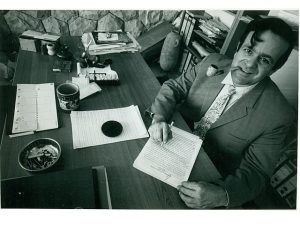Carbon-14 Tests Substantiate Scroll Dates, Hershel Shanks, Biblical Archaeology Review (17:06), Nov/Dec 1991.

Magen Broshi, Curator of the Shrine of the Book. By צלם של מוזיאון ישראל – מוזיאון ישראל, CC BY-SA 4.0, https://commons.wikimedia.org/w/index.php?curid=92354768
This general conclusion was announced in a press release some months ago, but when BAR asked Magen Broshi, curator of the Shrine of the Book in Jerusalem for a copy of the lab report, he refused to release it, stating, “Why should we give it to you when you taunt us?” Professor Israel Carmi of the Weizmann Institute of Science in Rehovot, Israel, promised to provide us with a copy, but later reported that he was instructed by his colleagues not to do so.
As one of the reports recognizes, the C14 tests were undertaken as a result of prodding by outside scholars, principally Robert H. Eisenman of California State University, Long Beach, who question the paleographic dating of the scrolls.
In 1951 C-14 tests were performed on the linen in which one of the scrolls had been wrapped, but no tests were done on the scrolls themselves. Since then, C-14 testing has become far more refined and only a minuscule amount of material is needed from a scroll or a fragment to perform the tests.
Read the rest of Carbon-14 Tests Substantiate Scroll Dates in the online Biblical Archaeology Society Library.
What do you want to know?
Ask our AI widget and get answers from this website